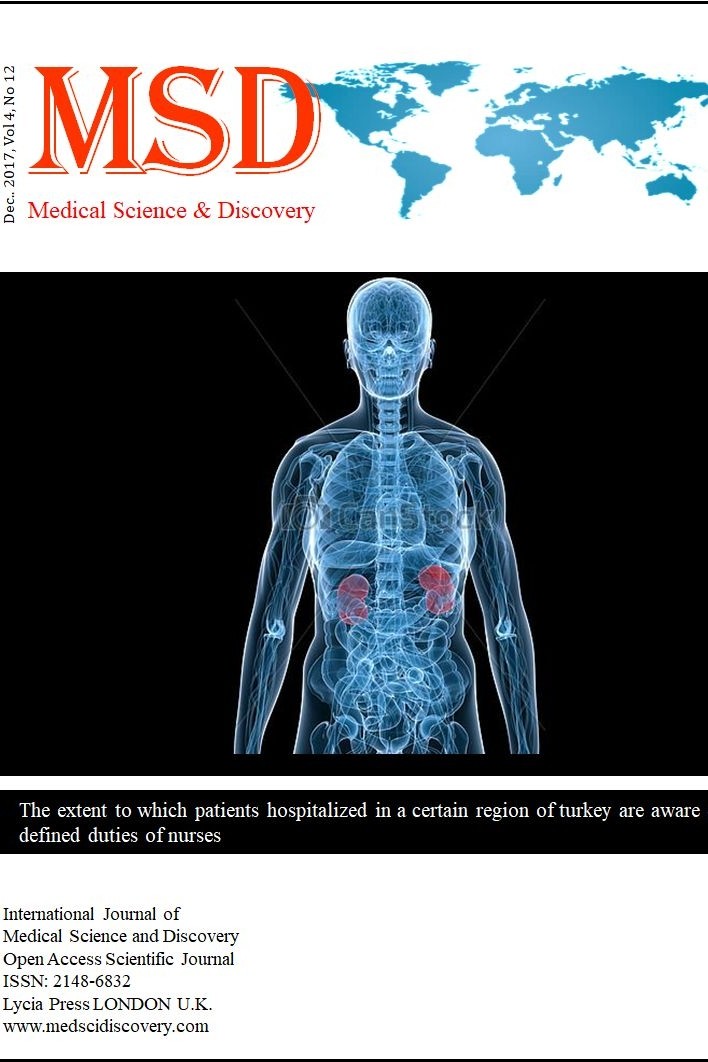Impairments of Diabetes Mellitus related Nephropathy and blood bio- chemicals by the Thymus Vulgaris L. and Thymbra Spicata L
Impairments of Diabetes Mellitus related Nephropathy and blood bio-chemicals by the Thymus Vulgaris L. and Thymbra Spicata L.
Diabetes mellitus, Streptozocin, Diabetic rat, Thymus Vulgaris L., Thymbra Spicata L., AST, ALT, UREA, Nephyropathy, Nephyron,
___
- Increased risk of renal deterioration associated with low e
- GFR in type 2 diabetes mellitus only in albuminuric
- subjects. Internal medicine. 2009;48(9):657-63. 19.
- Zhu WW, Chen HP, Ge YC, Xie HL, Zeng CH, Li LS, et
- al. Ultrastructural changes in the glomerular filtration
- barrier and occurrence of proteinuria in Chinese patients
- with type 2 diabetic nephropathy. Diabetes research and
- clinical practice. 2009;86(3):199-207. 20.
- Abdel-Rahman EM, Saadulla L, Reeves WB, Awad AS.
- Therapeutic modalities in diabetic nephropathy: standard
- and emerging approaches. Journal of general internal
- medicine. 2012;27(4):458-68. 21.
- Reddy MA, Tak Park J, Natarajan R. Epigenetic
- modifications in the pathogenesis of diabetic nephropathy.
- Seminars in nephrology. 2013;33(4):341-53. 22.
- Brenner BM, Hostetter TH, Humes HD. Glomerular
- permselectivity: barrier function based on discrimination
- of molecular size and charge. The American journal of
- physiology. 1978;234(6):F455-60. 23.
- Varghese SA, Powell TB, Budisavljevic MN, Oates JC,
- Raymond JR, Almeida JS, et al. Urine biomarkers predict
- the cause of glomerular disease. Journal of the American
- Society of Nephrology : JASN. 2007;18(3):913-22. 24.
- Najafian B, Mauer M. Progression of diabetic
- nephropathy in type 1 diabetic patients. Diabetes research
- and clinical practice. 2009;83(1):1-8. 25.
- Suzuki D, Miyazaki M, Jinde K, Koji T, Yagame M,
- Endoh M, et al. In situ hybridization studies of matrix
- metalloproteinase-3, tissue inhibitor of metalloproteinase
- 1 and type IV collagen in diabetic nephropathy. Kidney
- international. 1997;52(1):111-9.
- Copyright © 2014 The Author(s); This is an open-access article distributed under the terms of the Creative Commons Attribution
- License (http://creativecommons.org/licenses/by/4.0), which permits unrestricted use, distribution, and reproduction in any medium,
- provided the original work is properly cited.
- ISSN: 2148-6832
- Başlangıç: 2014
- Yayıncı: Zafer AKAN
Aysen Turedi YİLDİRİM, Yesim OYMAK, Yontem YAMAN, Timur MESE, Selen BAYRAKTAROGLU, Yesim AYDİNOK, Canan VERGİN
Ultrasound-guided cannulation in placement of Hemodialysis Access Catheters in Predialysis Patients
Murat YİLDAR, Orcun GURBUZ, Gencehan KUMTEPE, Murat BASBUG, Omer TOPRAK
Zafer AKAN, Melek DİKİLİDAL, Hulya OZDEMİR, Gokhan OTO, Mehmet Bilgehan YUKSEL, Salaheddin AKCAY, Seda VATANSEVER, Hayrunnisa Yesil, Ahmet YİLMAZ, Ahmet VAR
Aldehyde dehydrogenase-1 expression and prognosis in triple-negative breast cancer
Edvin MURRJA, Zeynep Hande TURNA, Mehmet Akif OZTURK, Ahmet CİNKAYA, Tulin OZTURK
A case of complex suicide: Self-electrocution
Tarik ULUCAY, M. Sunay YAVUZ, M. Ziya KİR, Yildiray ZEYFEOGLU, İlknur KAHRAMAN, Faruk AYDİN, Gonca TATAR, Mustafa DALGİC, Gonca Piskin KESİCİ
